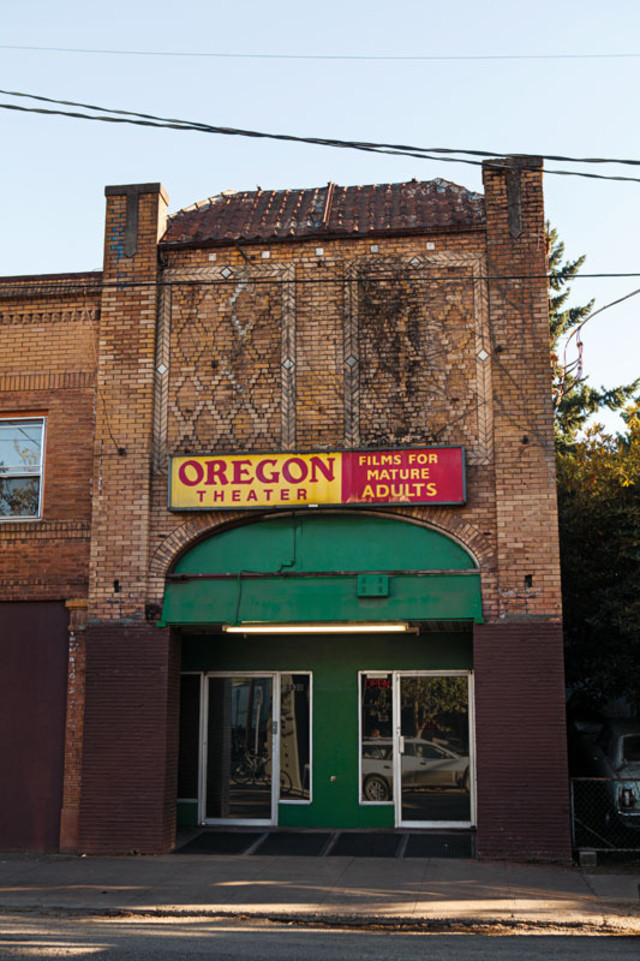The Last (Dirty) Picture Show

Image: Sierra Breshears
On September 6, 1925, Portlanders streamed into the new Oregon Theater on SE Division Street to see the mystery Steele of the Royal Mounted. Ornate light fixtures adorned the high-domed ceiling. The Italianate palace boasted 750 high-backed chairs, a stage for vaudeville, and a 16-by-20-foot screen. Construction cost $35,000 (about $467,000 today), including a $16,000 ($213,000) pipe organ.
Today, from a nondescript dark green entryway, a ramp lined with adult DVDs leads to a young, indifferent doorman who demands $8. Inside, a few dozen men, mostly seniors, occupy a hodgepodge of old couches in near-total darkness. The Wurlitzer is long gone. As for what’s on the screen . . . well, no judgment.
How did this change happen?
From the 1920s through the ’30s, neighborhood theaters like the Oregon became community bastions across Portland. In that era, 65 percent of Americans went to the movies at least once a week, mostly within blocks of their homes. But as downtown megaplexes and television ate away at the box office, one neighborhood cinema after another resorted to showing steamy lineups of adult films. At one point in the 1970s, 12 theaters across Portland ran XXX features regularly.
Today, the Oregon Theater is almost alone. “It’s the last holdout of an era,” says Gary Lacher, a local film archivist. It’s also the final fragment of a family legacy. The Oregon is owned by Gayne Maizels—the son of an immigrant family who acquired the theater in 1967, adding it to a mini-empire of Portland moviehouses that would include the Walnut Park (now a vacant lot), the Alad- din, and the Encore (now the Clinton Street Theater). (Maizels could not be reached for comment.) Until the 1960s, these theaters played mainstream Hollywood fare. But after the city’s first TV station arrived in 1952, ticket sales began a long decline.
The Maizels properties chugged along, buoyed occasionally by art-house flicks, and, briefly, Spanish-language films. But then, in 1972, a miracle arrived: Deep Throat, a film both shocking and shockingly lucrative, with estimated nationwide proceeds of $100 million—versus a $22,500 budget, one of the most profitable movies ever. “It was a milestone,” says Steve Stone, a local theater historian. “They couldn’t go back.” The Oregon, along with other theaters, followed the money.
But technology would soon strike again. Videotapes and cable TV hastened the end of public porno’s prime. One by one, neighborhood theaters closed. By the early 2000s, the Maizels family had sold off all of their properties except for the Oregon.
Mere blocks from hot restaurants like Ava Gene’s and Pok Pok, the dingy brick building is flanked by shiny new apartment buildings, pet spas, and a high-end tea shop. Even in a city renowned for strip clubs and tolerance, the Oregon Theater seems out of place. “It sure would be nice to see that place revert back to a place that served entertainment,” Lacher says. “But at least it’s been saved.”
